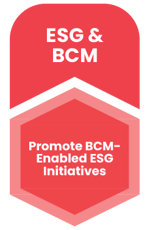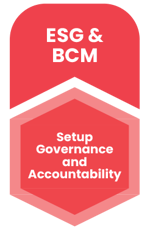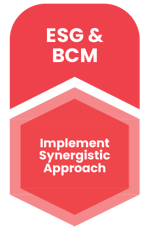ESG-Driven BC Planning
 This chapter, ESG-Driven Business Continuity Planning, explores the critical intersection of ESG factors with BCM.
This chapter, ESG-Driven Business Continuity Planning, explores the critical intersection of ESG factors with BCM.
By integrating ESG considerations into BC strategies, companies can enhance their resilience, mitigate risks, and contribute to a more sustainable future.
 This chapter, "Part 3: Developing a Synergistic Strategy," explores incorporating ESG goals into existing BC plans.
This chapter, "Part 3: Developing a Synergistic Strategy," explores incorporating ESG goals into existing BC plans.
Companies can ensure that their recovery efforts align with their sustainability objectives by conducting a materiality assessment and integrating ESG risks into business impact analysis.
Furthermore, the chapter will discuss the development of ESG-specific recovery plans.
By creating strategies to address environmental, social, and governance impacts during and after a disruption, companies can demonstrate their commitment to ethical and responsible business practices.
Incorporating ESG Goals into BCM Strategies
To ensure that business continuity plans are aligned with ESG goals, companies should:
Conduct a Materiality Assessment
- Identify the most significant ESG issues for the company and prioritize them accordingly.
Integrate ESG Risks into BIA
- Assess the potential impact of ESG risks on critical business functions and operations.
Develop ESG-specific Recovery Objective
- Establish recovery time objective (RTO) and recovery point objectives (RPO) for ESG-related functions.
Align BCM Strategies with ESG Goals
- Ensure business continuity plans support the company's ESG objectives.
Developing ESG-Specific Recovery Plans
Companies should develop recovery plans that address ESG-related risks and ensure that recovery efforts are sustainable and ethical. These plans may include:
Environmental Recovery Plans
- Strategies for mitigating environmental damage and restoring ecosystems.
Social Recovery Plans
- Plans for addressing the social impacts of disruptions, such as supporting affected communities and ensuring the well-being of employees.
Governance Recovery Plans
- Strategies for maintaining ethical and responsible business practices during and after a disruption.
Crisis Management and ESG Considerations
During a crisis, it is essential to consider ESG factors in decision-making. Companies should:
Communicate Transparently
- Provide clear and honest communication with stakeholders about the crisis and its impact.
Prioritise ESG Considerations
- Ensure that ESG factors are considered when deciding resource allocation and recovery efforts.
Minimise Environmental and Social Impacts
- Take steps to mitigate the environmental and social effects of the crisis.
Learn from the Crisis
- Conduct a thorough crisis review to identify lessons learned and improve future preparedness.
Summing Up ...
 ESG-Driven Business Continuity Planning emphasises integrating ESG factors into BCM strategies.
ESG-Driven Business Continuity Planning emphasises integrating ESG factors into BCM strategies.
By aligning ESG goals with BC efforts, companies can enhance their resilience, mitigate risks, and contribute to a more sustainable future.
The chapter outlines critical steps for incorporating ESG into BCM, including conducting a materiality assessment, integrating ESG risks into business impact analysis, developing ESG-specific recovery objectives, and ensuring that BC plans support ESG goals.
Additionally, the chapter discusses the importance of creating ESG-specific recovery plans to address environmental, social, and governance impacts during and after disruptions.
More Information About BCM-5000 [B-5] or BCM-300 [B-3]

 BCM-300 Business Continuity Management Implementer [B-3] course and the BCM-5000 Business Continuity Management Expert Implementer [B-5] course.
BCM-300 Business Continuity Management Implementer [B-3] course and the BCM-5000 Business Continuity Management Expert Implementer [B-5] course.
![Register [BL-B-3]*](https://no-cache.hubspot.com/cta/default/3893111/ac6cf073-4cdd-4541-91ed-889f731d5076.png) |
 |
 |
 |
 |
 |
![FAQ [BL-B-3]](https://no-cache.hubspot.com/cta/default/3893111/b3824ba1-7aa1-4eb6-bef8-94f57121c5ae.png) |
If you have any questions, click to contact us.
|
 |
 |
 |
 |



![[BCM] [ESG] [P1] [C2] The Interconnectedness of ESG and BCM](https://no-cache.hubspot.com/cta/default/3893111/92761db6-e38c-4cb4-8c0b-47e43e4e2b99.png)
![[BCM] [ESG] [P1] [C3] Identifying ESG Risks and Impacts](https://no-cache.hubspot.com/cta/default/3893111/09891369-2c7f-4ddf-b0b3-f39a0a68fa08.png)
![[BCM] [ESG] [P2] [C4] Assessing Business Continuity Risks](https://no-cache.hubspot.com/cta/default/3893111/74314c73-39b3-4918-b95b-277f25a533d0.png)
![[BCM] [ESG] [P2] [C5] Aligning ESG and BCM Risk Assessments](https://no-cache.hubspot.com/cta/default/3893111/cfdd2b85-cec6-45d7-8b5f-6a70744f42c4.png)



![[BCM] [ESG] [P4] [C10] Case Studies of Successful Integration](https://no-cache.hubspot.com/cta/default/3893111/f26a4121-18b8-48f6-bc80-d15d19a6beea.png)
![[BCM] [ESG] [P4] [C11] Future Trends and Challenges](https://no-cache.hubspot.com/cta/default/3893111/4516ccee-c5a9-4377-b569-c7b0ba983102.png)

![Email to Sales Team [BCM Institute]](https://no-cache.hubspot.com/cta/default/3893111/3c53daeb-2836-4843-b0e0-645baee2ab9e.png)

